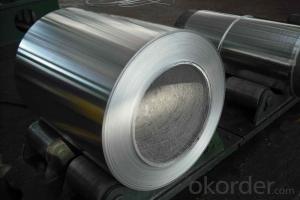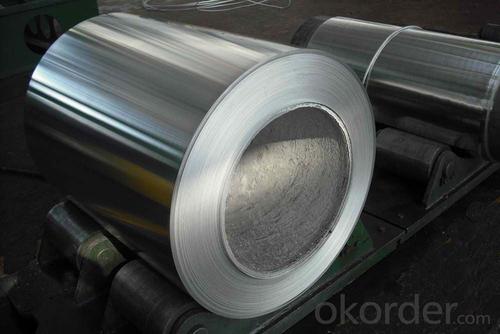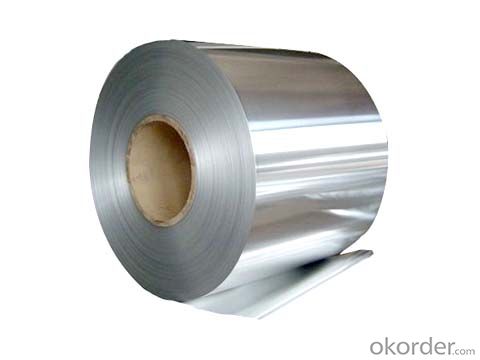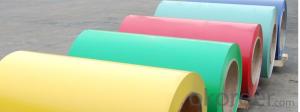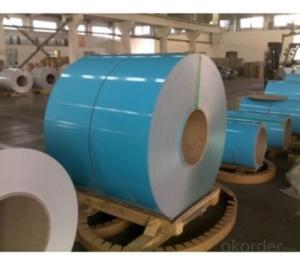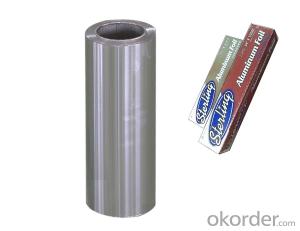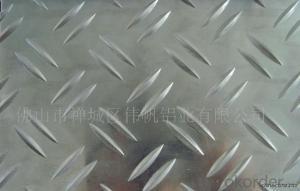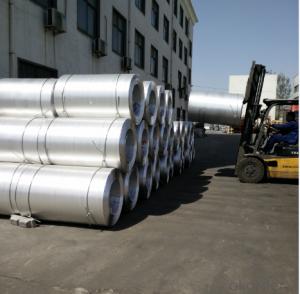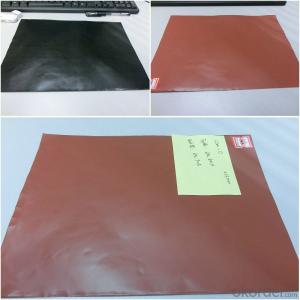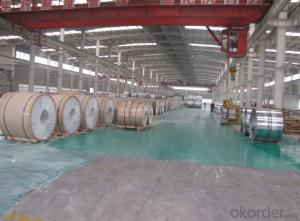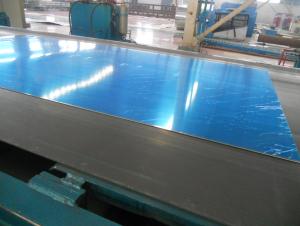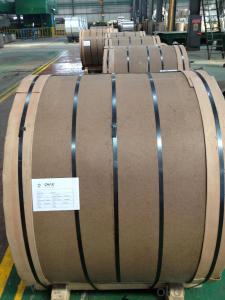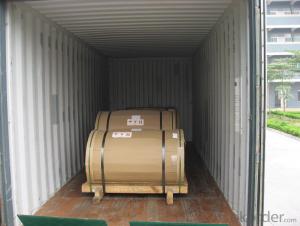Aluminum Foil Sheets Costco Grade Aluminium Coils for Rerolling Down Aluminium Foils
- Loading Port:
- Shanghai
- Payment Terms:
- TT OR LC
- Min Order Qty:
- 2 m.t.
- Supply Capability:
- 20000 m.t./month
OKorder Service Pledge
OKorder Financial Service
You Might Also Like
Specification
1.Structure of Aluminium Coils for Rerolling down Aluminium Foils
Aluminium Coils for Rerolling down Aluminium Foils is one semi-finished aluminium material. This strip can be rolled down to aluminium coil,sheet,circle ect. The alloy AA1050 is widly used in building, industry ect. Its weight is much lower than steel. So many customers choosed aluminium material instead of steel.
2. Main features of Aluminium Coils for Rerolling down Aluminium Foils
a.Competitive price---We have our own mills and can produce mill finished aluminium coils, so we can control the production cost better.
b.Professional after-sale service---We have more than 15 years exportation experience and you need not worry about the exporation problems.
c.Fast delivery time---We can control the delivery time within 35 days.
3. Image
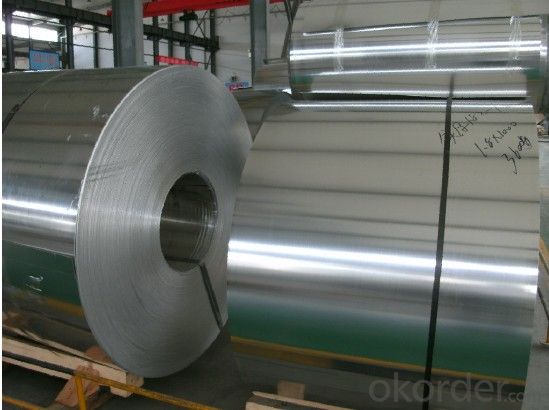
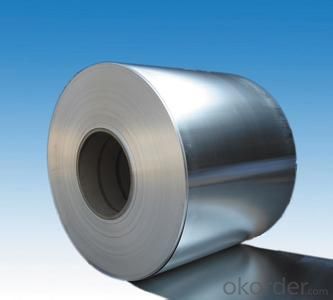
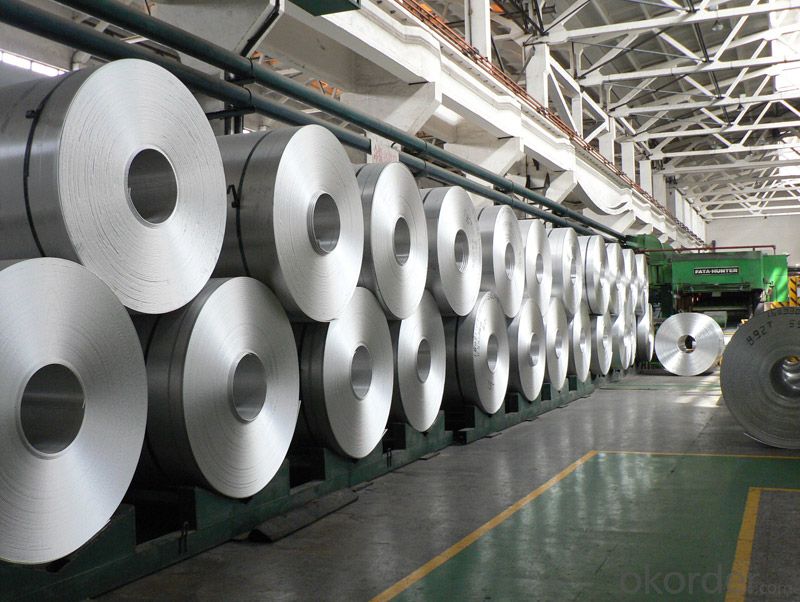
4. Product Specification
| Alloy | Temper | Thickness | Width | Weight |
| AA3003 | H14 | 0.2MM-3MM | 1000MM-1500MM | 2 TONS |
5.FAQ:
What is the quality standard?
---Usually our standard is GB3880-2006
What is the largest width?
---It is 2300mm
What is the MOQ?
---Usually we can accept 80 tons.
- Q: need help choosing an aluminum welder at a descent price also
- i think, welding,,, tig is right machine for aluminum, thank you.
- Q: Can aluminum sheets be used for food processing conveyors?
- Yes, aluminum sheets can be used for food processing conveyors. Aluminum is a popular choice for food processing equipment due to its many desirable properties. It is lightweight, corrosion-resistant, and has excellent thermal conductivity. These features make aluminum sheets ideal for use in food processing conveyors, as they can withstand the demanding environment of food production while ensuring efficient and safe transportation of food products. Additionally, aluminum is easy to clean and maintain, making it a hygienic choice for food processing applications.
- Q: What type of aluminium sheet is a food grade?
- Pure aluminum, alloy aluminum can be. However, the majority of pure aluminum. Used by customers.
- Q: some car manufactures use aluminium car body on a steel sub-frame. explain, using electrode potential what would happen if a weak acid was to become trapped in the space between these two metals!! any current plzz help, its for my assignment, and i dont understand
- Chemistry is all about how atoms exchange electrons. Some kinds like electrons better than others, and this is the basis of electrochemistry and Redox reactions. It all starts with the acid: HAcid - H(+) + Acid(-) The important thing is the H(+) ion, which is positive because it is a Hydrogen atom which has lost an electron. This leaves it with a positive charge, since it is nothing but a positive proton at this point. Fe + 2H(+) - Fe(+2) + H2 The above is a typical reaction between an acid and most metals. The H(+) ions strip an electron from the metal to form a metal ion and Hydrogen gas. What has happened is the Hydrogen ions have oxidized the Iron. The Iron in turn has reducted the Hydrogen. In terms of electrochemistry, there are two half reactions going on simutaneously. First, the Iron atoms generate two negative electrons: Fe - Fe(+2) + 2e(-) = OXIDATION OF IRON Then the Hydrogen ions combine with the electrons to form Hydrogen gas: 2H(+) + 2e(-) - H2 = REDUCTION OF HYDROGEN Note that in both reactions, the charges are equal on either side of the reaction. The next part of this process happens when the Iron ions come into contact with the Aluminum metal: 3Fe(+2) + 2Al - 2Al(+3) + 3Fe Note the Iron ions are recting exactly the same way the Hydrogen ions did. In other words, they are oxidizing the Aluminum. The Aluminum is now reducing the Iron. The net result of this is that the acid rusts the Iron and then the Iron rusts the Aluminum. The end result is the production of tiny amounts of Hydrogen gas, The Iron being displaced from where it had initially been, and the solid Aluminum discintegrating into some form of Aluminum salt. Calculations involve something called an electrochemical series and the voltage is given using the Nerst equation. Both the electrochemical table and the equation can be found in any chemistry textbook.
- Q: This question asks for methods to ensure a project remains cost-effective when using aluminum sheets.
- <p>To ensure your project is cost-effective using aluminum sheets, first, source high-quality aluminum at competitive prices. Consider buying in bulk to reduce per-unit costs. Second, optimize your design to minimize material usage without compromising strength. Use precise cutting techniques to reduce waste. Third, collaborate with reliable suppliers who can offer cost-effective solutions and may provide discounts for long-term partnerships. Lastly, monitor and control your project's budget closely, and consider the lifecycle costs, including maintenance and potential resale value, to ensure long-term cost-effectiveness.</p>
- Q: This question asks about the structural integrity and suitability of aluminum sheets for use in the construction of high-rise buildings.
- <p>Aluminum sheets are not typically used as the primary structural material in high-rise buildings due to their lower strength compared to steel and concrete. However, aluminum is known for its high strength-to-weight ratio, making it suitable for non-structural applications such as facades, window frames, and roofing. In high-rise construction, aluminum can be used in combination with other materials to provide a lightweight and aesthetically pleasing exterior while maintaining structural integrity with stronger materials like steel and concrete.</p>
- Q: What are the different types of alloys used for powder-coated aluminum sheets?
- Powder-coated aluminum sheets utilize various alloys, each possessing distinct properties and characteristics. Among the commonly utilized alloys are: 1. The 3003 Alloy: This alloy finds extensive application in powder-coated aluminum sheets due to its exceptional corrosion resistance, formability, and high strength. Its versatility makes it suitable for building facades, signage, and automotive parts, where moderate strength and resistance to atmospheric corrosion are essential. 2. The 5052 Alloy: Renowned for its remarkable strength and excellent corrosion resistance, this alloy is commonly employed in marine and architectural applications that demand durability and resistance to saltwater and harsh environments. Additionally, it is frequently used for manufacturing electrical enclosures and transportation equipment. 3. The 6061 Alloy: This highly versatile alloy offers outstanding weldability, formability, and machinability. It finds application in various fields, including aerospace components, marine hardware, structural components, and automotive parts. Its corrosion resistance allows for easy powder coating, enhancing appearance and providing additional protection. 4. The 7075 Alloy: Noted for its exceptional strength-to-weight ratio and fatigue resistance, this alloy is predominantly utilized in aerospace applications, such as aircraft fittings and structural components, where strength and lightweight properties are crucial. Although its higher cost limits its use in powder-coated aluminum sheets, it remains present in specific specialized applications. These examples represent only a fraction of the diverse range of alloys employed in powder-coated aluminum sheets. The selection of an alloy depends on specific application requirements, encompassing factors such as strength, corrosion resistance, formability, and cost.
- Q: What are the different types of surface treatments available for powder-coated aluminum sheets?
- There are several different types of surface treatments available for powder-coated aluminum sheets. Some of the most common options include anodizing, chemical etching, and mechanical finishing. Anodizing is a process that involves immersing the aluminum sheets in an electrolytic solution and applying an electric current to create a protective oxide layer on the surface. This treatment can enhance the durability and corrosion resistance of the aluminum, as well as provide a decorative finish with a wide range of colors. Chemical etching is another surface treatment method that involves applying a chemical solution to the aluminum sheets to create a textured or patterned surface. This process can be used to create unique designs and improve the aesthetics of the material. Mechanical finishing techniques, such as brushing or polishing, can also be used to enhance the appearance and texture of powder-coated aluminum sheets. Brushing creates a brushed or linear pattern on the surface, while polishing creates a smooth and glossy finish. Additionally, there are specialized surface treatments available for specific applications, such as chromate conversion coating for improved adhesion of adhesives or paints, or clear coatings for added protection against UV radiation. Overall, the choice of surface treatment for powder-coated aluminum sheets depends on the desired aesthetic, functionality, and durability requirements of the application.
- Q: 10mm how much is the aluminum sheet?
- The price is calculated according to the price of aluminum ingot + processing fees (aluminum state), the specific price according to the size of the aluminum plate, zero shear and the whole board price also has the difference, Jiangsu Yi Heng Liaoning Wang Zhong Nanshan aluminum do this thickness.
- Q: A 0.2412 gram sample of aluminum ore was dissolved in a dilute mineral acid. The solution was treated with an excess of sodium oxalate. The resultant aluminum oxalate precipitate was filtered, washed and redissolved in mineral acid, then titrated with 42.12 mL of 0.1098 N KMnO4. Calculate the percent of aluminum in the sample.
- errgwet
Send your message to us
Aluminum Foil Sheets Costco Grade Aluminium Coils for Rerolling Down Aluminium Foils
- Loading Port:
- Shanghai
- Payment Terms:
- TT OR LC
- Min Order Qty:
- 2 m.t.
- Supply Capability:
- 20000 m.t./month
OKorder Service Pledge
OKorder Financial Service
Similar products
Hot products
Hot Searches
Related keywords
